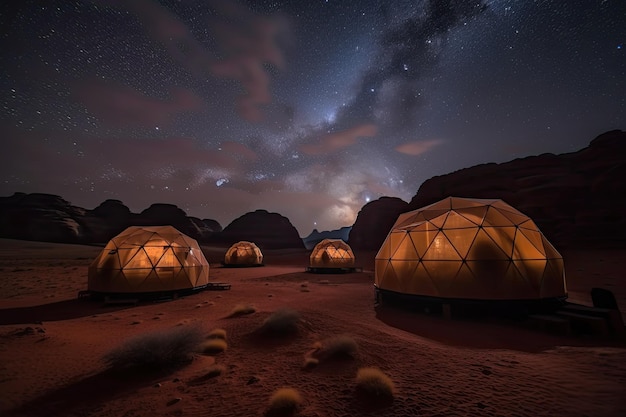Wadi Rum, often dubbed the “Valley of the Moon,” is a stunning expanse located in southern Jordan that resembles the surface of Mars more than any earthly desert. Its rich tapestry of dramatic sandstone mountains, vast sandy plains, and funky rock formations invokes wonder and awe. With an unearthly charm that etches itself into memory, navigating Wadi Rum can be both exhilarating and overwhelming, especially for first-time explorers looking to uncover its sacred secrets. A well-structured map can be the key to fully immersing oneself in this breathtaking landscape.
To truly appreciate Wadi Rum, one must first understand its layout. The desert spans approximately 720 square kilometers, filled with geological marvels and natural wonders. A carefully crafted map serves not only as a navigational tool but also as a guide to some of the most remarkable locations within this magnificent desert. With terrain ranging from expansive sandy flats to towering cliffs, adventurers must approach their journey equipped with both direction and curiosity.
Upon entering Wadi Rum, the first notable feature is the iconic Jebel Rum, its jagged peaks dominating the skyline. Ascending this mountain is not for the faint-hearted. Its challenging trails unfold vistas that are nothing short of phenomenal. Once at the summit, an unobstructed panorama of the surrounding desert offers an exhilarating perspective that few landscapes can rival. A map can be instrumental in planning the ascent, ensuring that climbers navigate the most efficient path while avoiding precarious cliffs and loose rocks.
Another pivotal landmark is Jebel Khazali, known for its captivating rock inscriptions left by the Nabateans. This site is not only historically significant but also a treat for photography enthusiasts seeking to capture the interplay of ancient art with the rugged beauty of the rock faces. A meticulously labeled map will indicate the various inscriptions, guiding visitors to this open-air gallery where stories from millennia past unfold through intricate carvings.
Wadi Rum is also home to various natural arches, with the Burdah Rock Bridge being one of the most noteworthy. Standing proudly as one of the largest natural arches in the area, the Burdah Rock Bridge is a must-see for adventurers. To reach it, one might traverse the desert floor, challenging both physical endurance and mental resolve. Having a map that marks the route to this monumental feature allows travelers to absorb the surrounding scenery without the anxiety of losing their way.
For those curious about the local ecosystem, a visit to the Oryx Sanctuary offers a glimpse into the conservation efforts underway in this arid habitat. Understanding how the indigenous wildlife adapts to the harsh conditions of Wadi Rum lends insight into the delicate balance of life in the desert. A map can help navigate the distances between these ecological havens, highlighting routes less traveled that may lead to remarkable sightings of desert fauna.
As part of an adventure in Wadi Rum, many visitors partake in guided jeep tours or consider the magic of hot air ballooning to embrace the unparalleled beauty from above. Each option offers a unique perspective, yet both highlight the enormity of the desert. A map can indicate popular routes for these tours, ensuring that participants don’t miss out on crucial highlights and hidden gems along the way.
For a quintessential experience, camping under the vast night sky is an absolute must. The vivid display of stars unfurls like a tapestry, and the sight of constellations shimmering above Martian dome tents is simply enchanting. It’s during these nights, embraced by the tranquility of the desert, that you begin to understand the profound allure of Wadi Rum. Utilizing a map to locate the best camping spots not only enhances comfort but also ensures that the most scenic vistas surround you as you settle down for the night.
Of course, navigating Wadi Rum requires a practical understanding of the climate and terrain. Temperatures can soar dramatically during the day, plunging noticeably at night. A map can serve as a reminder to carry adequate supplies and gear for varying conditions. It highlights water sources, shade areas, and emergency exits, offering essential instructions for a securely mapped adventure. This foresight allows for an immersive exploration rather than a hurried retreat.
Beyond the physical navigation, there is a deeper allure to Wadi Rum that compels travelers to engage with it more intimately. It’s the emotional and almost spiritual resonance the desert invokes—the haunting silence interrupted only by the wind’s soft whispers or the distant howl of a fox. This profound stillness encourages contemplation and connection, and as the sun dips below the horizon, the desert transforms into a canvas of stunning oranges and purples. Planning the perfect spots to view the sunset using a reliable map can enhance this experience, creating unforgettable memories that last long after the journey ends.
In conclusion, the map of Wadi Rum is not merely a guide; it is a portal into an otherworldly landscape that invites exploration and adventure. The wonders of Wadi Rum are boundless, and its geography provides a captivating narrative of nature’s artistry. As you traverse this Martian desert, the map will accompany you as both a practical tool and a companion on a quest for discovery, urging you to explore further and connect deeper with the enchanting wilderness of Wadi Rum.
